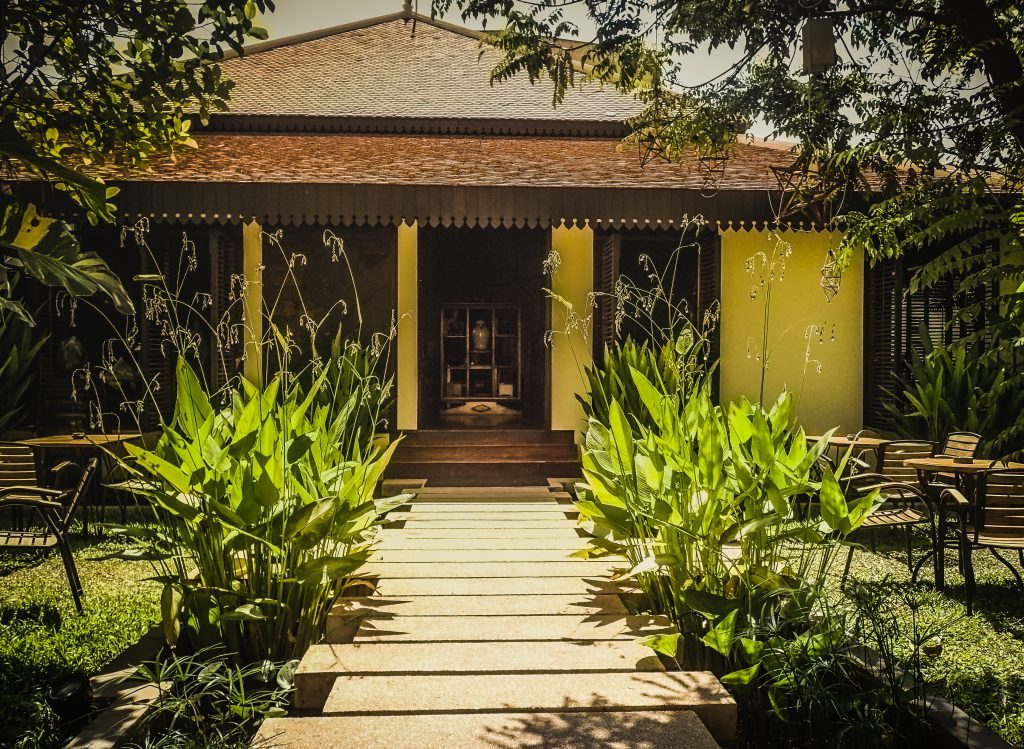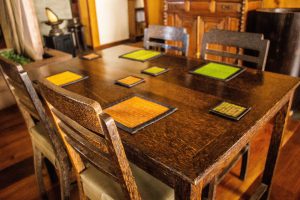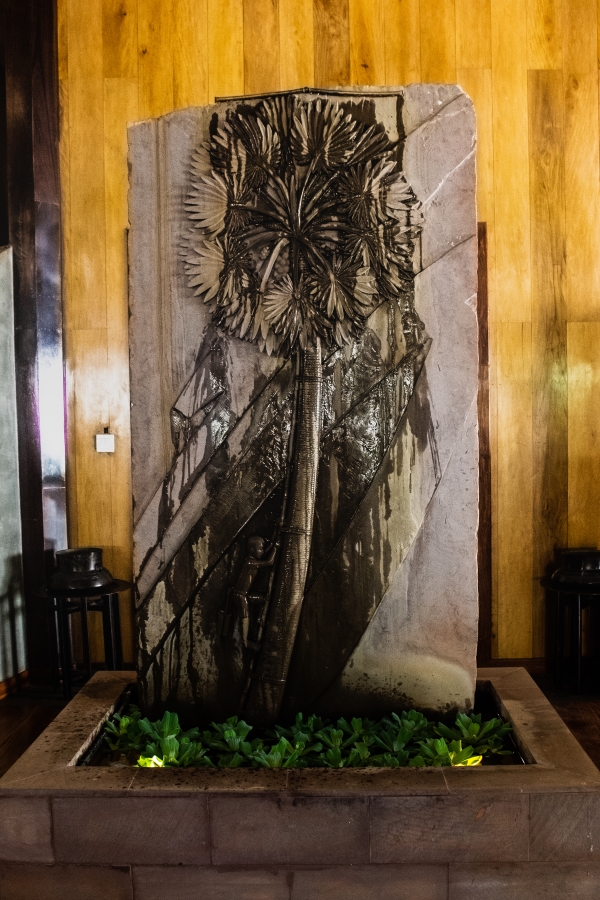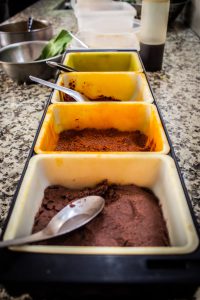By: Chan Reaksmey Sor

The Sugar Palm is one of the most well-known restaurants for Khmer traditional food in Cambodia. To promote and bring back Khmer traditional food life, Chef Kethana decided to open this restaurant in 2006 as her second restaurant. It is located in Street 27, opposite Pannasastra University, Krong Siem Reap, Siem Reap province.


“The restaurant is named The Sugar Palm because we can find sugar palm trees everywhere in Cambodia, and it is a useful tree that can be made into any kind of furniture or material, ”chef Kethana explain, “Moreover, this type of tree exists in Cambodia in a long period.”

Since this restaurant is modeled after a Khmer traditional cafeteria for monks, so it has big windows that can bring up all the cool air inside the restaurant. The Sugar Palm is decorated with different types of Khmer products such as Buddha and elephant statues. However, there is one big, marvelous rock that has been carved into a picture of a palm sugar maker climbing a sugar palm tree.
At an early age, chef Kethana liked eating, but she did not like cooking. She moved to New Zealand in 1968 during the Khmer Rouge period. During this monstrous period, she lost all of her family members. “Living in New Zealand made me appreciate Khmer food,” she said. While living in New Zealand she needed to cook in order to have Khmer food, since Khmer food couldn’t be found in New Zealand at that time.
In 2002, she came back to Cambodia, and it was when she realized that Khmer food was not being Khmer food she remembers from childhood anymore. She saw different foods that were influenced by other countries. Some of them looked like Khmer food but did not have a Khmer taste. Furthermore, Khmer food is not being eaten as popular as before. In 2003, those problems inspired her to open her first restaurant in Phnom Penh to promote Khmer food to Cambodians as well as to the world. The restaurant in Phnom Penh was so popular that most of her customers requested her to open another one in Siem Reap. And so she did in 2006.

The dishes that The Sugar Palm serves were passed down from chef Kethana’s mother and grandmother as well as different elderly people in Cambodia who use specific Khmer ingredients. “Learn your own food first before you learn others”chef Kethana said. “Please look after Khmer food the way it was, not the way it is now”


One of the most famous Khmer traditional dishes is Amok. Amok is a type of food that has a soft, sweet texture and is created from different types of Khmer ingredients such as Kapi (Cambodian shrimp paste) and Kroeung (Cambodian marinade/spice paste that made from lemongrass), which are commonly found in other Khmer traditional dishes as well. The Sugar Palm restaurant cooks differently from other restaurants, as they do not pre-cook their amok. This makes their amok have a more delightful taste. Doing this helps to keep the amok’s flavor fresh and flavorsome. To create its flavor, meat or fish, coccinia Grandis leaf or sweet leaf bush or noni leaf, coconut cream, Kroeung (Cambodian marinade/spice paste that made from lemongrass), dried bell pepper, Kapi (Cambodian shrimp paste), palm sugar, fish sauce, and salt are needed for this food. A banana leaf is made into a bowl shape, and a spoon, a bowl, and steamer are required as utensils to cook Amok. First, we put Kroeung, dried red pepper, Kapi, sugar palm, fish sauce, and salt into one bowl. Next, we mix them up. Then we pour half a bowl of coconut cream into the ingredient bowl, using the banana leaf bowl as a measuring tool. We mix the coconut cream with the ingredients, and then put coccinia Grandis leaf/sweet leaf bush/noni leaf at the bottom of the banana leaf. Afterward, we add some meat or fish into the ingredient bowl and mix the meat with the ingredients. Next, we pour all the ingredients into the banana leaf and put it into the steamer. 45 minutes later you will have a cooked Amok.

In 2011, The Sugar Palm had a special guest, Gordon Ramsey. He came to discover Khmer cuisine. He and chef Kethana cooked one special dish, the Amok. “This traditional recipe is far more refined than I expected,” he said. “It has a really nice, a soft, texture,” he told chef Kethana as he tasted the food.
Chef Kethana hopes that this restaurant will be open to serve Khmer traditional food to everyone for as long as possible. She also hopes that Khmer traditional food will one day be well known around the world. “Khmer traditional food will be put in the map,” She said confidently.